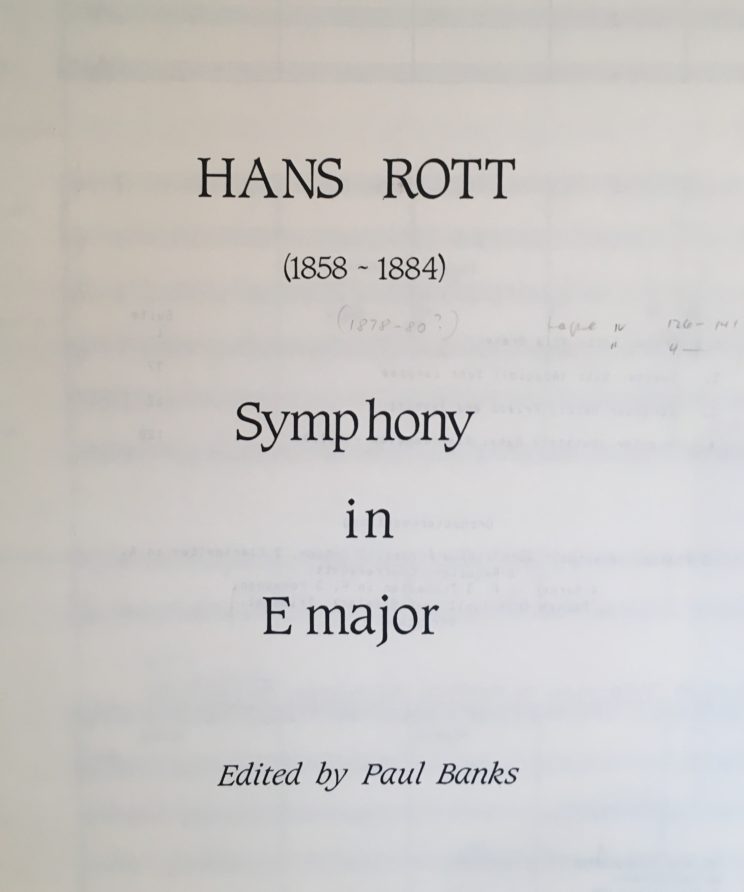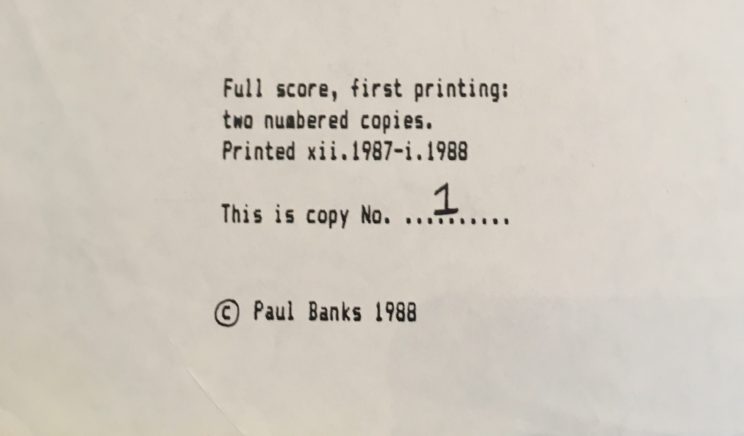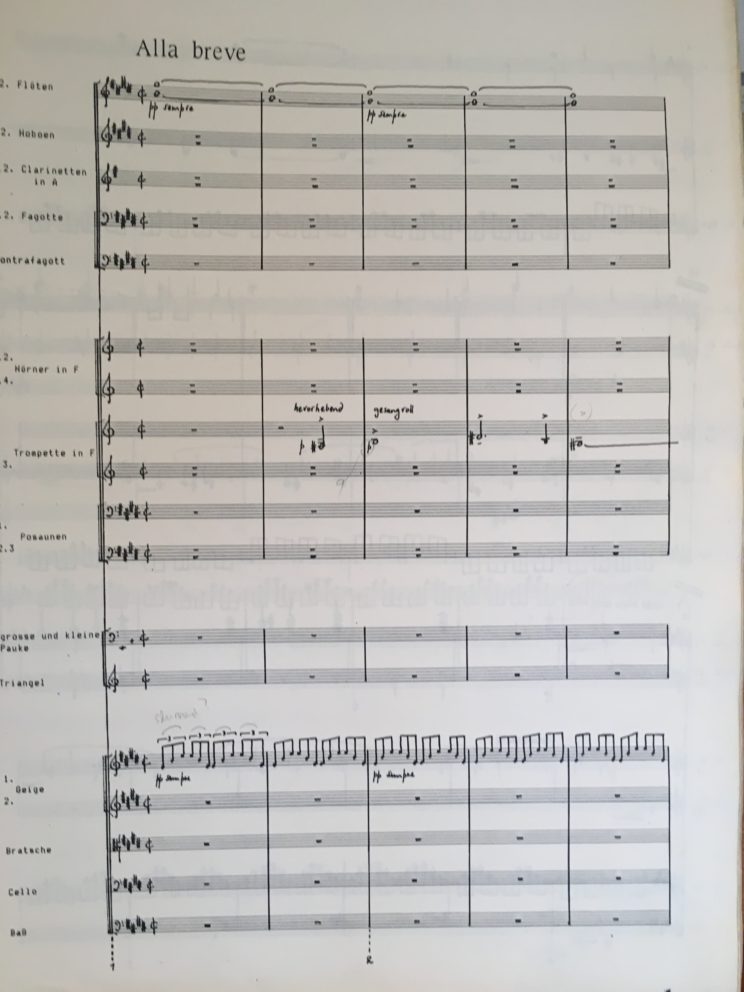Here’s a bit of music history I didn’t know I had.
Gerhard Samuel, who gave the first performance of Hans Rott’s Symphony Symphony in E, repeated the work for his final concerts before retiring from the podium as conductor of the Cincinnati Philharmonia after an unforgettable tour of Portugal in 1997.
I was his assistant at the time and helped prepare the orchestra. Gerhard very sweetly gave me his “spare” score as a present. I’ve had it for 22 years, but today noticed this little bit of information about the circumstances of its printing.
Although Mahler toyed with programming the Rott Symphony for most of his career, the work languished in semi-oblivion for over 100 years following Rott’s tragic death in 1884. Hats off to Paul Banks for putting this fascinating, flawed, yet inspiring, work into a form in which it could be performed.
Since Gerhard’s first performance and groundbreaking recording in 1989, the Rott Symphony has become something of a repertoire piece, with several subsequent recordings by figures as eminent as Dennis Russel Davies and Paavo Jarvi. The entry of the Rott into the body of recorded music, and its incorporation into the repertoire of orchestras worldwide, has contributed immeasurably to our understanding of the creative growth of Mahler.
Anyway, I was touched to discover that this was the first copy of the first printing of this important, and nearly lost, work. It’s quite a thing to imagine the first two copies being printed, and from that simple act, music history changing forever.
Perhaps something to bring to Colorado MahlerFest some day?



Wow. I have never heard this symphony before, or heard of Rott at all. What an amazing and unusual piece. Thanks for sharing, Ken.
It’s interesting to look at the comments on YouTube under the different versions of Rott’s symphony. There’s a virtually unanimous appreciation for the symphony, coupled with surprise that it isn’t better known.
Imagine if Brahms had shown Rott support instead of criticizing him.
Hi Andrew
I don’t think it’s fair to be too hard on Brahms in this case. As you know, he was the ultimate musical craftsman and would have felt an obligation to give a young, talented composer honest feedback. This wasn’t a generation that did a lot of encouraging. Rott had an enormous amount to learn about every aspect of composition at this point in his life. A comparison of the Rott to something like Mahler’s Das Klagende Lied shows Mahler was way ahead of his classmate in every way.
And yet Rott seemed a special soul with a certain strong thread of genius for coming up with very strong material even if he lacked the technique to develop it fully. It’s absolutely tragic his mental health collapsed as it did. If he’d had a few more years to mature and hear his music played, there’s no telling what he could have done.
But for all its flaws, this is a very special piece, and Mahler’s affection for it and for Rott is manifest in his many quotations from it.
Great to hear from you, Andrew
K
Thanks very much for your follow-up comment, Ken!
Thank you for drawing my attention to this symphony, Ken. Listening to it for the first time on Friday, I was struck by the parallels (long-breathed, unselfconscious, i.e. very un-Mahlerian, lyricism, a liking for fugues as a developmental technique) with an similarly precocious symphonic debut, that of Franz Schmidt. Of course, Schmidt’s is the much more assured piece (near-miraculously so, given how little large-scale orchestral music he had written previously…and, oh, that infernally overused triangle in the Rott!), but I have no doubt that, given a similar number of years to live, Rott would have achieved, at the very least, a comparable compositional stature to that of his younger countryman.
I know I’m quite late to the discussion (I just discovered the festival), however, missing from it is the considerable “artistic sum” Mahler seems to have draw from the Rott scherzo for his 5th Symphony. This alone would explain his reluctance to perform it. Having performed it myself, I think it is considered “non-standard rep.” Consider the recently recovered First Symphony of Rachmaninoff. Adding works to “The Canon” (meaning they enter the rotation), is still very competitive. The symphonic canon is ye about 200-wide at most in my estimation.